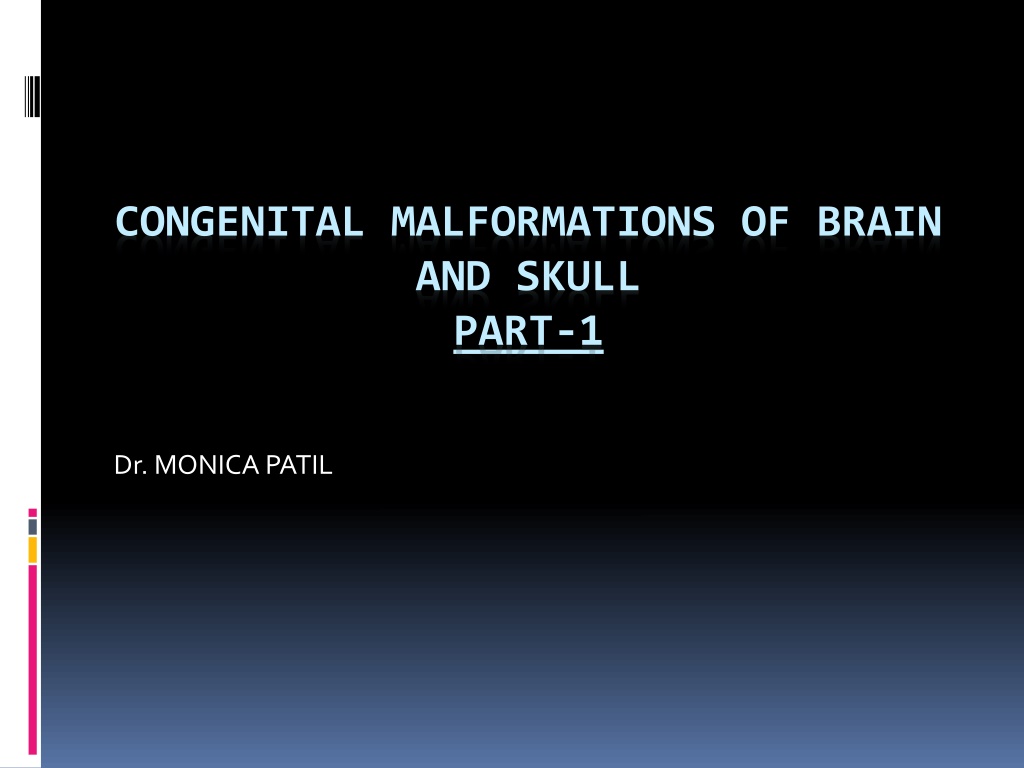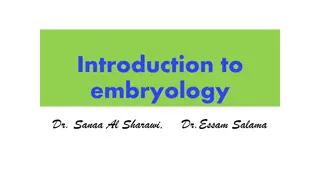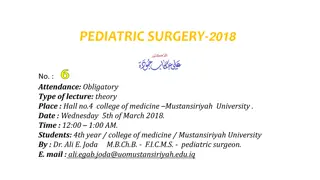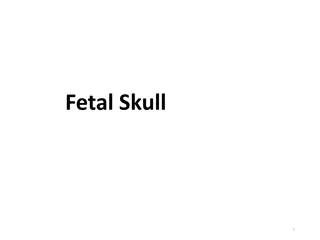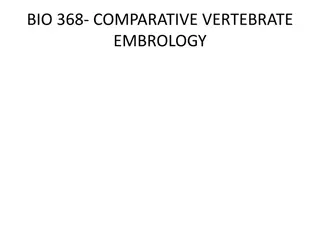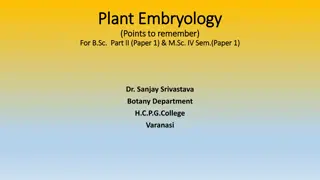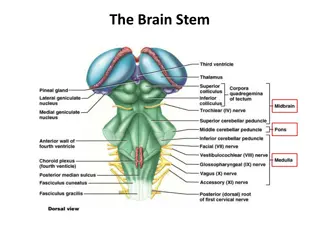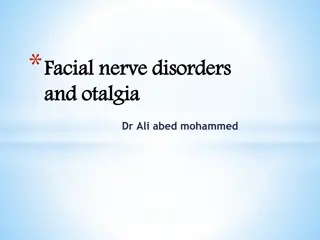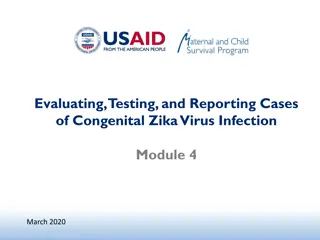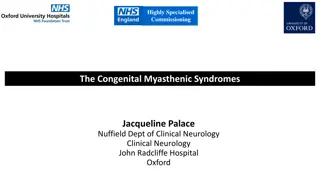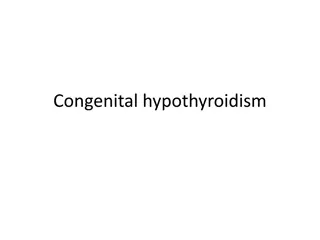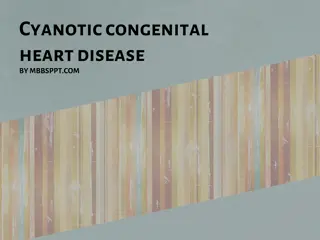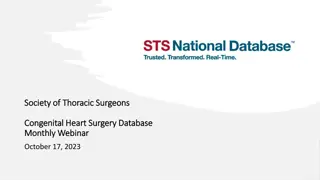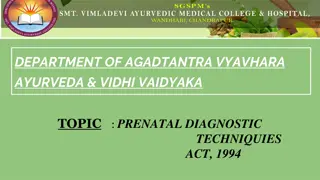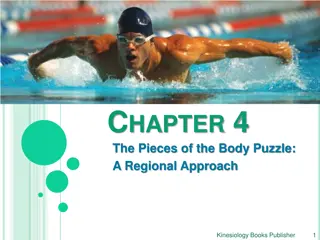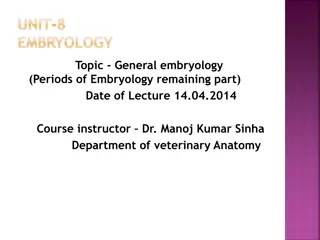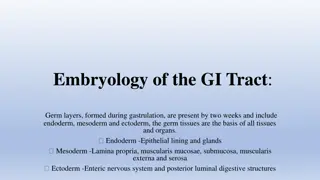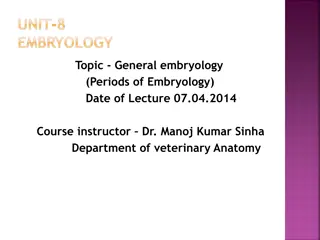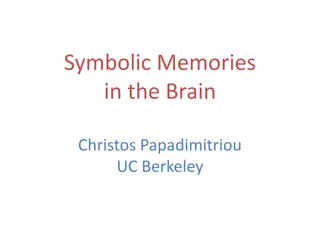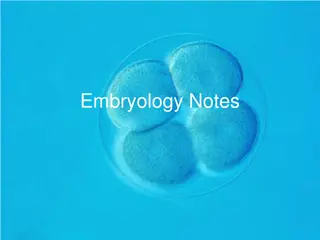Understanding Congenital Malformations of Brain and Skull Part 1: Embryology and Neurulation
This educational material explores the embryological development of brain and skull structures, focusing on neurulation processes, formation of brain vesicles, and potential errors leading to malformations. From neurulation initiation to neuronal proliferation and migration, the content delves into key events and structures critical for proper brain development. Learn about the significance of neural stem cells, neuronal migration patterns, and the impact of histogenesis errors.
Download Presentation

Please find below an Image/Link to download the presentation.
The content on the website is provided AS IS for your information and personal use only. It may not be sold, licensed, or shared on other websites without obtaining consent from the author. Download presentation by click this link. If you encounter any issues during the download, it is possible that the publisher has removed the file from their server.
E N D
Presentation Transcript
CONGENITAL MALFORMATIONS OF BRAIN AND SKULL PART-1 Dr. MONICA PATIL
EMBRYOLOGY OF HEMISPHERE FORMATION
MAJOR EVENTS NEURULATION PROLIFERATION NEURONAL MIGRATION
3RDWEEK-neurulation begins as thickening of ectoderm on either side of midline. 4thWEEK- neural folds and tube 25thDAY-anterior neuroporefuses 27thDAY-posterior neuroporefuses
FORMATION OF BRAIN VESICLES 4TH WEEK- division into the 3 major vesicles 5TH WEEK- further division
NEURULATION ERRORS ANENCEPHALY- failure of closure of anterior neuropore SPINA BIFIDA- failure of closure of posterior neuropore CHIARI II MALFORMATION-abnormal neurulation of hindbrain CEPHALOCELES
Stem cells around the primitive ventricular ependyma form the germinal matrix These neural stem cells (NSCs) are multipotent ,i.e., generate CNS phenotypes- neurons, astrocytes and oligodendrocytes Neurons migrate through developing telencephalon to form cortical mantle zone.
Axons of migrating neurons lie in the intermediate zone between germinal matrix and the cortical mantle and gives rise to cerebral WM. Some NSCs form radial glial cells extending from ependyma to pia It serves as rope ladder to guide migrating neurons ERROR in histogenesis leads PNETs.
NEURONAL MIGRATION Peak migration at 11 to 15 weeks Along the RGCs fron inside out Deepest layer of cortex formed first f/b superficial layers ERROR- leads to malformation of cortical development like microcephaly, megalencephaly, heterotopia, cortical dysplasia and lissencephaly
OPERCULATION, SULCATION AND GYRATION 4TH TO 5TH MONTH Sylvian fissure first to develop f/b calcerine sulcus ERROR- leads to microcepahly and microlissencephaly
MYELINATION Begins at 20 weeks From inferior to superior, back to front and central to periphery. Myelination completed by 2 yrs of age
POSTERIOR FOSSA MALFORMATIONS
CHIARI MALFORMATIONS Chiari I malformation most common peg-like cerebellar tonsils displaced into the upper cervical canal through the foramen magnum Chiari 1.5 malformation caudal descent of cerebellar tonsils and brain stem Chiari II malformation displacement of the medulla, fourth ventricle and cerebellar vermis through the foramen magnum usually with associated with a lumbosacral spinal myelomeningocoele Chiari 0 malformation syrinx no cerebellar tonsil or brain stem descent
Chiari III malformation features similar to Chiari II but with an occipital and/or high cervical encephalocoele Chiari IV malformation severe cerebellar hypoplasia without displacement of the cerebellum through the foramen magnum probably a variation ofcerebellar hypoplasia Chiari V malformation absent cerebellum herniation of the occipital lobe through the foramen magnum
CHIARI 1 MALFORMATION Asymptomatic until adulthood. Symptoms may include headache and those associated with syrinx or scoliosis. The likelihood of becoming symptomatic is proportional to the degree of descent of the tonsils. All patients who have greater than 12 mm of descent were symptomatic
ETIOLOGY Altered bone anatomy and abnormal CSF hydrodynamics is most widely accepted concept Primary paraxial mesoderm insufficiency Normal sized hind brain housed in a too small bony envelope
IMAGING Peg like tonsils instead of gently rounded Tonsillar herniation(> 5mm) Retrocerebellar CSF space at FM/C1 levela re effaced Cerebellar folia are angled obliquely or inferiorly(instead of horizontally) Bone-small posterior fossa, short clivus, CVJ assimilation Associated findings-CCD, absent septum pellucidum and hydrocephalus Displays a normal fastigium(dorsal point)
TREATMENT Treatment is usually reserved only for symptomatic patients or those with a syrinx. It consists of decompressing the posterior fossa, by removing part of the occipital bone, and posterior arch of C1 as well as performing a duroplasty. With or without tonsillar resection
D/D TONSILLAR ECTOPIA INTRACRANIAL HYPOTENSION RAISED INTRACRANIAL PRESSURE IDIOPATHIC INTRACRANIAL HYPERTENSION CRANIAL CONSTRICTION
CHIARI II MALFORMATION Cerebral dysgenesis of corpus callosum absent septum pellucidum obstructive hydrocephalus, aqueductal stenosis Prominent massa intermedia fenestration of the falx with interdigitated gyri or absent falx; heart shape incisura Creeping or climbing cerebellum stenogyria/polymicrogyria/heterotopia tectal beaking and kinking of medulla Cascade of tissue
spinal syringohydromyelia scoliosis segmentational anomalies: Klippel-Feil syndrome atlanto-axial assimilation Diastematomyelia cranial vault small posterior fossa enlarged foramen magnum Luckenschadel skull scalloping of petrous temporal bone skeletal clubfoot
TREATMENT Surgical repair of the meningomyelocele within 72 hrs decreases mortality Folate supplements during pregnancy prevents it
CLINICAL FAETURES Most common posterior fossa malformation More common in females Patients usually manifest in the first year of life with symptoms of hydrocephalus and associated neurological symptoms. Macrocephaly is the most common manifestation Despite severe cerebellar abnormalities, cerebellar signs are not common.
TRIAD OF DWS hypoplasia of the vermis and cephalad rotation of the vermian remnant cystic dilatation of the fourth ventricle extending posteriorly enlarged posterior fossa with torcular- lambdoid inversion (torcular lying above the level of the lambdoid due to abnormally high tentorium)
OTHER FINDINGS Absent fastigium Occipital bone may be scalloped, focally thinned and remodelled Brainstem, cerebellum is somewhat small in moderate to severe forms
PATHOLOGY AND TREATMENT Delayed opening of foramen of Magendie This causes 4th ventricle to balloon out posteriorly and form CSF filled cisterna magna cyst Treatment is by VP shunting with or without cyst shunting or marsupialisation
BLAKES POUCH CYST Blake's pouch cyst is a cystic ependyma lined protrusion from the fourth ventricle into the cisterna magna, below and posterior to the vermis . It is caused by a failure of regression of Blake's pouch secondary to the non-perforation of the foramen of Magendie.
MEGA CISTERNA MAGNA Large PF Enlarged cistern magna May scallop or remodel occiput Crossed by veins, falx cerebelli 4th ventricle and vermis normal No supratentorial abnormalities
RHOMBENCEPHALOSYNAPSIS characterised by the vermis absence and continuity of the cerebellar hemispheres, dentate nuclei, and superior cerebellar peduncles. Associated with VACTERL
JOUBERT SYNDROME Also known as vermian aplasia or molar tooth midbrain-hindbrain malformation An autosomal recessive disorder where there is a variable degree of cerebellar vermal ageneis When associated with anomalies of the kidneys, liver and/or eyes then the termJoubert syndrome and related disorders (JSRD) is used.
Affected individuals usually present with ataxia and have dysmorphic facies, global developmental delay, hypotonia, rapid breathing and oculomotor apraxia. CORS-cerebello oculo renal syndrome COACH syndrome-cerebellar hypoplasia, oligophrenia, ataxia, coloboma and hepatic fibrosis
IMAGING Foreshortened midbrain with deep interpeduncular fossa, a diamond shaped 4th ventricle and prominent thickened elongated superior cerebellar peduncles giving characteristic molar tooth signlike appearance. small dysplastic or aplastic cerebellar vermis absence of fibre decussation in thesuperior cerebellar peduncles and pyramidal tracts , which can be assessed by diffusion tensor imaging
The posterior fossa typically shows a bat wing 4thventricle dysplasia and heterotopia of cerebellar nuclei In a minority of cases minor lateral ventriculomegaly and corpus callosal dysgenesis is also present.
EMBRYOLOGY Most common CNS malformation. Development of the corpus callosum occurs between the 12thand 16- 20thweeks of gestation. It begins with the genu and then continues posteriorly along the body to the splenium. The rostrum is the last part to be formed. Myelination of the corpus callosum occurs in the opposite direction, from the splenium forwards. In primary agenesis parts of the corpus callosum which form before the insult will be present whereas later parts will be absent. Presence of the rostrum essentially excludes primary agenesis One apparent exception to this rule is holoprosencephaly in which it is the anterior parts of the corpus callosum which are absent . This has been termed atypical callosal dysgenesis.
